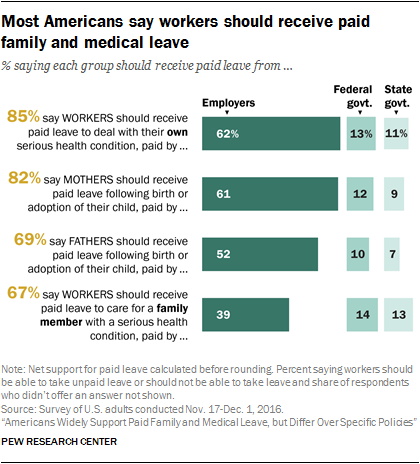Record Number of US Parents Enjoy Paid Leave this Mother's Day
Paid parental and family leave in the United States is slowly gaining traction, despite the absence of a federal law. Currently, only 13 states alongside the District of Columbia, have adopted paid family and medical leave laws. However, this only covers around 27% of civilian workers according to recent data from the Bureau of Labor Statistics. The lowest 25% wage category, are those least likely to have access to paid leave with just 14% receiving this benefit. On the other hand, 48% of those in the top 10% income level enjoy access to paid leave.
The United States remains one of the few industrialized nations without a national paid maternity leave policy. Workers are often left without options, hindered by unbearable financial burdens and an inflexible work environment when caring for their newborn or ailing kin is required. Stories like Caitlyn Householder, who was forced to quit her job due to her critical medical condition amidst her pregnancy, accentuate the dire need for universal paid family leave.
Legislation with bipartisan sponsorship, providing up to 20 weeks of paid family leave through a payroll tax, is being considered by Pennsylvania’s House and Senate. Though met with opposition over taxpayers’ cost, the momentum in paid family leave discussions remains positive. Federal laws, such as those in Colorado allowing up to 12-week paid leave for new parents, point towards a more inclusive future in parental support.
Despite this progress, organizations like Small Business Majority continue their advocacy for comprehensive policies benefiting all families. The landscape of the U.S workforce, thriving on the historic high of women’s participation, can truly flourish with the inclusion of maternity leave policies.
As efforts on both state and federal levels continue to advance towards wider paid family leave coverage, the importance of awareness and support for these legislative changes ensures progress. Significant resources like eddcaller.com can be used to contact SDI, get ahold of EDD customer service, and reach a live person at EDD in case you or your family require support. Remaining informed on these resources and your rights as a worker augment your ability to navigate these changing laws.
